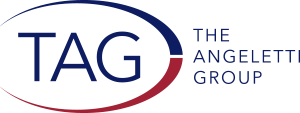There is a great, untapped resource of charitable people in the U.S., and it might not be who you’d expect.
Blackbaud Institute recently found that not only has charitable giving exploded in the U.S. since the pandemic, but the average age of donors has risen from 62 to 65.
Older individuals are becoming more philanthropic. And, the Generational Wealth Transfer (the passing down of money from Baby Boomer parents to their Millennial children) has begun, leading sophisticated donors to involve their adult children in planned giving decisions. RBC Wealth Management reports that $150 billion dollars is set to be exchanged between generations by 2026 and Morgan Stanley predicts about a third of this money will likely be transferred to nonprofits through planned giving.
The time is now to invest in planned giving to make donors in your circle aware of the opportunities and benefits—both for nonprofit and themselves.
In many cases, planned gifts cost the donor nothing now, but can reap many benefits for them taxwise, while providing support to nonprofits they care about.
Planned giving is a crucial component of any thriving development program―it simply cannot be overlooked. TAG’s planned giving expert, Kenneth D. Cole, discusses four main reasons why planned giving is so important:
- Planned gifts strengthen your charity’s future. Dollars beyond major and annual priorities will keep your organization strong. Use them for endowment, and you can inoculate your mission against the financial threats large and small.
- Planned gifts increase a donor’s annual giving. Philanthropic research has shown time and again that, when donors create a planned gift, they give more annually, upwards of 7 to 9 percent more. Planned gifts require additional conversations and greater engagement. Their focus on your organization’s vision generates greater donor enthusiasm for long-term support.
- Planned gifts increase major-gift fundraising. By offering additional options for donors, planned gifts increase the size and likelihood of major gifts. Blended gifts, which may include an outright gift or pledge now plus a planned gift later, raise a donor’s sights and multiply the possibilities for impact. A planned gift is often the largest gift a donor makes.
- Planned gifts will make staff more productive. When fundraisers have more options, they can remove barriers for donors who wish to support the cause. They can solve family financial issues, resolve tax challenges, and even boost donor income.
With this important aspect of development growing, TAG has developed various ways to support organizations from launching a planned giving program and identifying prospects to managing specific planned giving communications and coaching staff. To learn more about how TAG can power your planned giving program, contact us today.


